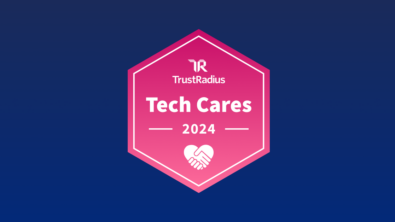Improve productivity of product development processes using corporate social networking
In the last blog we discussed corporate Social Networking in a product development environment. We wanted to talk to customers who have implemented a corporate social networking to enable their product development collaboration, and learn about their experiences. Here is an example of a customer – Northrop Grumman who has implemented Social networking in their product engineering. Jim Ayers, Systems Engineer, Northrop Grumman, has been involved with the project from early concept days to implementation and now supporting it. Jim is a certified Six Sigma Black Belt. He also leads the Teamcenter Community Collaboration Special Interest Group of the PLM World. He is based in Huntsville Alabama, USA. Here is the excerpt from my interview with Jim:
Question:
What was Northrop’s product development environment before you implemented corporate Social Networking?
Answer:
Most of our product engineering work is large contracts for the US Air force and Navy. These projects involve large teams, including partners, in different geographic locations; we were no different than most other companies. We relied mostly on e-mails, Microsoft Office Outlook, to communicate ideas, issues, input, etc. Most of our meetings were teleconferences. When the Navy had even a simple question it required the Navy to write a formal letter asking for clarification. And vice-a versa, when we had a question about an RFP or the contract we would follow the same process. This whole process often took weeks.
Our e-mail exchanges were becoming difficult to save and trace due to storage size limitations. Meeting notes were hand written in a notebook and eventually transcribed to e-mail.
Then in 2004 we were bidding jointly with Lockheed on a US Air force project. The Lockheed facility was in Northern California and our team was 300 miles away in Southern California. The Air force’s question to us was: could we be as productive with teams in 2 different locations versus our competitor in a single location? Suddenly we were forced to look at technology to help us overcome barriers of our project teams in 2 locations. The word Social Networking, as we know now, was not even coined at this time.
Question:
What did you do to break down the barrier of project teams in multiple locations?
Answer:
We had to find a solution in hurry. We studied available technology and tools. We evaluted Lotus Notes, Microsoft SharePoint (by itself) and Teamcenter Community Collaboration developed on Microsoft SharePoint. After extensive evaluation we felt that Teamcenter Community Collaboration offered most of the functionality we needed out-of-the-box and also it was based on the Microsoft SharePoint platform which were very familiar with. We felt Teamcenter Community Collaboration offered us simple Web parts customization to make it the way we felt our people would like to see the home page and able to navigate to right information easily and quickly.
Question: What were the biggest initial challenges?
Answer:
We had no product issues. However, the biggest early challenges were all around security – firewall, access control of information. We started the project with 3 engineering work stations in a DMZ (demilitarized zone is a physical or logical sub network that contains and exposes an organization’s external services to a larger untrusted network, usually the Internet). We continued to work with the vendor development team to resolve security issues. You have to recognize that these projects are top security projects!
I can happily say now looking back that we started with “creative chaos”, not knowing where and how this tool will evolve. We started with information sharing which was one of the main objectives of this tool. We were learning different new uses every day. For example, the VP of Engineering started using the tool for managing his staff meetings. He was able to track issues and actions from each meeting, he could trace who the attendees were for each meeting, what actions are completed. We started using visual collaboration capabilities of Teamcenter Appshare (Application Sharing). We can now review designs and drawing, do mark-ups where all the participants are on teleconference and are also viewing the same design on their PC. It allowed different people to take control and give their input. Our management realized, after some coaching by us, that they can use it for any application, like PowerPoint, Word, PDF, Excel, etc. The executives working on a presentation, proposal or financial spread working collaboratively with large team are now able to use the tool’s notification capabilities whenever the latest document is checked in. This is especially important for executives traveling to make a presentation to corporate headquarters, or the Navy and Air force on a proposal they are able to access and synchronize to have the latest document.
We saw its usage growing beyond engineering. We saw the executives, non-engineers and the contracting agencies adopting and using the tool in their daily work. We have grown from 3 seats, to 10,000 users and 4 major deployments over the past 3 years.
Most users can start using the tools after only 1 hour of training. The beauty of this tool is it is so familiar and easy to use.
Question: How has your engineering process evolved with Social Networking?
Answer:
We have now organized information by product and contracts. We have created WBS – work break down – by contract. We have made easy to navigate and find the right information quickly. The information is secure, firewalled to only authorized users.
We have also created visual navigational models using JT (Siemens PLM Software’s high-performance, compact visualization format). So users can now visually navigate to the right context quickly. For casual users this is very productive since they always may not know the contract number.
We have eliminated off-line storage. All meeting notes along with issue list are stored in the system. It has also made it easy to educate users about the workflow.
We have been able to reduce and in some cases eliminate travel. Payback for the tool is “one-day”!
Question: What else?
Answer:
Ad-hoc meeting/collaboration with US Navy and Airforce has become part of our formal process. What used to take 3 weeks to resolve simple questions now we can resolve them in a few minutes. We all get on the phone and Appshare. There is no ambiguity since we all can see the same document. And we capture the outcome of the meeting in the system.
Social Networking is integral part of our engineering release/change workflow. It has to be. It must be integrated with product data management/PLM. Our engineers continue to create CAD designs, save it in their work-in-process PDM repository (Teamcenter), and when they are ready to “release” the workflow automatically transfers it into the social networking space to send notifications for the review process.
Question: What advice would you give to someone who is thinking of social networking in their product engineering environment?
Answer:
– Get your users involved early
– Get the right stake holder involved
– Understand user workflows and show them how this would enhance it


